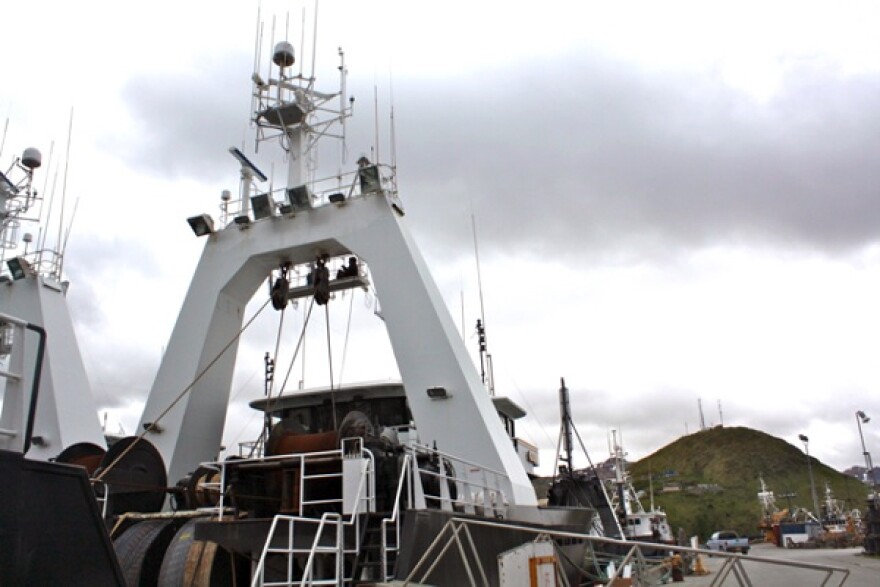Video: This array was towed across trawl tracks to test the effectiveness of trawl changes to reduce adverse effects to benthic animals and habitat. (Credit: NOAA Fisheries and North Pacific Research Board)
Reducing bycatch has been a hot topic in the pollock trawl industry. Scientists are working with the commercial fishermen to find a solution to the problem. And, at the Alaska Marine Science Symposium this week in Anchorage, they say they are making progress.
Much of the conservation effort is done in line with the Magnuson-Stevens Act, which, among other things, establishes essential fish habitats and mandates that harvests remain sustainable.
"It also says the act of harvesting can't damage core components of the habitat that fish need," Brad Harris, a professor at Alaska Pacific University and directs the fisheries aquatic science and technology lab, said. "And the sense is that maybe you're not over-fishing, but the way that you're fishing might actually damage the productivity of the system. And so it requires that there's a process in place that minimizes these adverse effects."
Harris says there's really only three ways to minimize those adverse effects.
"You can stop fishing or fish less; you can fish somewhere else - you can close an area; or you can change how you fish," Harris said.
In Alaska, especially, the first two options aren't viable. So, scientists are concentrating on the third option - changing how you fish.
Ideally, the pollock trawl fleet fishes pelagically - meaning in the water column above the sea floor, but, according to Carwyn Hammond, who is with the conservation engineering group at the Alaska Fisheries Science Center, sometimes that's not where the fish are.
"There are times where, you know, you've got these beautiful schools of pollock that are in the water column and you can fish pelagically, but then there's times those pollock aggregate on or near the sea floor and they do have to have a certain amount of contact in order to catch those fish," Hammond said.
But, the more contact the net has with the sea floor, the more damage it can do to vital fish habitat. Hammond and her team are working with commercial fishing crews to try alternative gear setups using weight clusters attached to the front of the net using a strong, lightweight rope spaced every 90 feet.
Though the weight clusters still contact the bottom, it allows the rest of net between the clusters to float above the sea floor - and Hammond says it doesn't have to be by much.
"Just a few inches; we may have knocked over either a sea whip or a basket star, which is what we used for the bottom trawl proxy," Hammond said. "We may knock them over, but they can recover and they can go onto still be vital habitat."
Besides minimizing contact with fish habitat, Hammond says raising the gear off the ground limits the impact of bottom trawling on other creatures of the deep.
"What we discovered with the bottom trawl, with raising those sweeps, is we significantly reduced what we call the unobserved mortality of crabs - so snow crab, tanner crab, and king crab," she said. "Because those invertebrates can interact with the gear on the sea floor, but they're not actually caught, they stay on the sea floor. So we wanted to know in that study, what percentage of them lived versus what percentage of them died."
With the adjusted gear, impacts were almost fully reduced to snow and tanner crab, and mortalities with red king crab were reduced by about half.
Scientists are testing other options as well. And when they figure out which setup is best, Hammond says the next step will be to partner with commercial fishermen to test the gear and ensure fishing can still be done effectively and efficiently.




